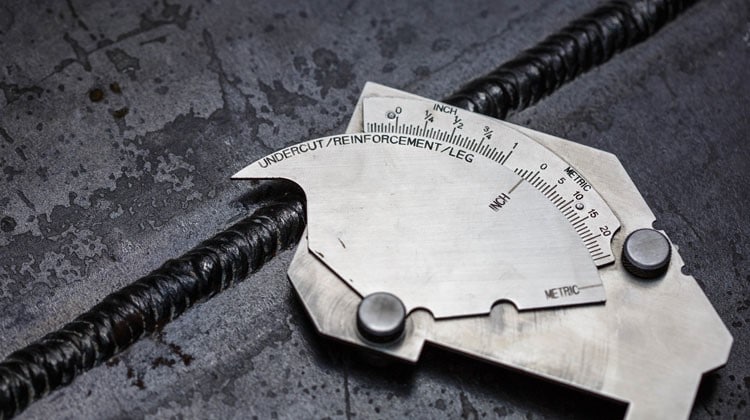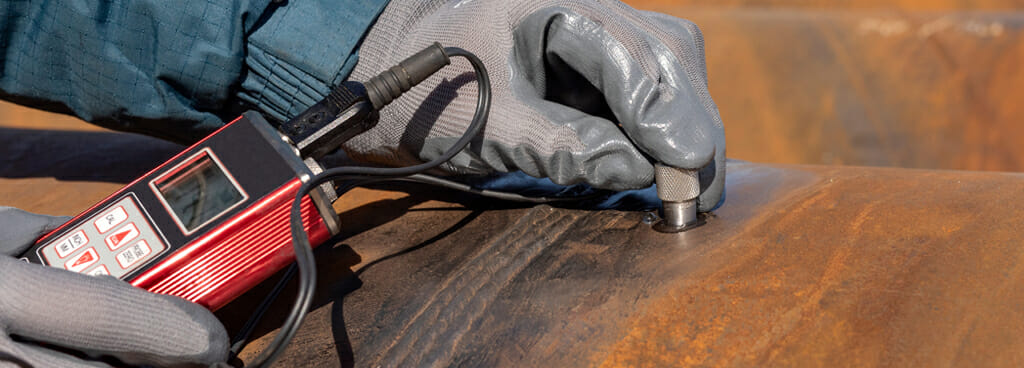How Welding Examination Contributes to Longevity and Dependability in Construction Jobs
Welding assessment offers as a fundamental element in making sure the longevity and reliability of manufacture tasks. By systematically recognizing potential issues during various stages of production, welding inspections not only stop expensive failures but additionally foster a society of quality guarantee within the group. Using sophisticated techniques, such as non-destructive testing, assists in comprehensive assessments while maintaining product stability. As tasks proceed, the impact of these evaluations ends up being significantly evident, raising essential inquiries about their long-term benefits and effects for overall job success. What details techniques can be carried out to make the most of these advantages?

Importance of Welding Examination
Making sure top quality with welding inspection is a vital part of any kind of construction project. It works as a safeguard to verify that welding procedures satisfy established criteria and specifications, thus enhancing the overall stability of the framework or part being made. Welding inspection is not just a step-by-step action; it is a crucial technique that assists determine potential issues early, guaranteeing that they are addressed before they intensify right into significant troubles.
The value of welding assessment can be underscored by its duty in maintaining security and resilience. Welded joints are often based on extreme problems, and any type of problems can jeopardize the performance and longevity of the end product. By implementing rigorous examination methods, companies can ensure conformity with market laws, thereby minimizing risks related to structural failures.
Furthermore, reliable welding examination promotes self-confidence amongst stakeholders, consisting of clients and governing bodies, that the job satisfies the highest high quality requirements. This not only boosts the online reputation of the fabricator however also adds to lasting cost savings by avoiding rework and possible liabilities. Ultimately, welding examination is essential to the success and integrity of manufacture projects, reinforcing the worth of quality control in design methods.

Common Welding Defects
Welding defects can dramatically threaten the architectural stability of produced parts, making their recognition and rectification vital. Typical welding defects can be extensively classified right into three types: geometric, metallurgical, and service-related.
Geometric issues include issues such as damaging, where the base metal is eroded beside the weld, and too much convexity, which can bring about anxiety focus factors. These flaws can compromise the strength and resilience of the weld joint.
Metallurgical flaws emerge from improper welding procedures or materials, causing problems such as porosity, where gas pockets develop within the weld, and absence of blend, which takes place when the weld steel falls short to bond correctly with the base steel. These issues can significantly compromise the weld's efficiency.
Service-related problems might not emerge until after the element is in use. Instances consist of breaking due to thermal tension or exhaustion, which can lead to disastrous failings if not dealt with.
Understanding these usual flaws equips fabricators to apply efficient assessment approaches that boost the reliability and durability of their tasks, ultimately guaranteeing security and performance standards are satisfied.
Evaluation Techniques and strategies
An extensive method to inspection methods and techniques is essential for alleviating and identifying welding flaws in fabrication projects. Numerous approaches are employed to make sure the integrity of welds, consisting of visual evaluation, ultrasonic testing (UT), radiographic screening (RT), magnetic particle screening (MT), and dye penetrant screening (PT) Each strategy has its toughness and certain applications.

Magnetic bit testing is useful for identifying surface area and near-surface issues in ferromagnetic materials. By applying a magnetic field and using ferrous bits, assessors can determine interruptions efficiently. Color penetrant screening highlights surface-breaking defects via the application of a dye that permeates into fractures, making them noticeable under ultraviolet light.
Employing a combination of these techniques makes certain an extensive analysis, enhancing the integrity of welded structures.

Effect on Task Long Life
Efficient assessment techniques considerably affect the long life of manufacture tasks. By determining possible flaws and more information inconsistencies in welding procedures, evaluations ensure that frameworks are constructed to endure operational stress and anxieties over time. When welds are thoroughly analyzed, the likelihood of undiscovered problems, which could bring about architectural failings, is reduced.
Routine evaluations promote adherence to industry requirements and regulations, which are critical for ensuring the durability of welded joints. Such compliance not only enhances the integrity of the task yet likewise assures stakeholders relating to the top quality of the job. Prompt discovery of flaws permits for corrective activities to be taken early, protecting against expensive fixings or complete overhauls down the line. Welding Inspection Milwaukee.
Additionally, effective assessment methods useful source cultivate a society of quality control within construction groups. When workers understand that their job will be rigorously evaluated, they are more probable to stick to finest methods and keep high standards throughout the production procedure. Eventually, this dedication to high quality not just extends the life-span of the project yet likewise decreases upkeep costs, therefore improving the general financial feasibility of fabrication endeavors.
Enhancing Integrity in Fabrication
Reliability in fabrication is considerably improved through extensive examination processes that resolve potential weaknesses in welding practices. Reliable welding inspection not just identifies defects early however additionally provides vital responses to welders, making sure adherence to established standards and specifications. By utilizing non-destructive testing methods, such as ultrasonic or radiographic assessments, fabricators can identify the integrity of welds without endangering the product.
In addition, regular evaluations promote a culture of top quality and responsibility amongst construction teams. When welders understand that their work undergoes rigorous assessments, they are much anonymous more most likely to abide by ideal procedures and techniques. This aggressive strategy reduces the danger of pricey failures during the operational stage of a project.
Eventually, enhancing reliability in fabrication with thorough inspection refines not just raises the lifespan of the fabricated components however also reinforces stakeholder self-confidence in the job's total high quality and toughness. Investing in robust welding evaluation methods is essential for accomplishing lasting integrity in any kind of manufacture venture.
Verdict
In recap, welding evaluation offers as an essential part in guaranteeing the long life and reliability of fabrication jobs. Ultimately, effective welding assessment methods reinforce stakeholder confidence and substantially contribute to the financial feasibility of construction ventures.
Welding examination serves as a fundamental element in making sure the long life and integrity of manufacture jobs.Making sure top quality via welding inspection is a crucial component of any type of fabrication project. Inevitably, welding assessment is integral to the success and dependability of fabrication projects, enhancing the worth of quality guarantee in design practices.
A detailed method to examination methods and techniques is vital for alleviating and identifying welding defects in manufacture jobs.In recap, welding examination serves as a crucial element in making sure the durability and reliability of construction projects.